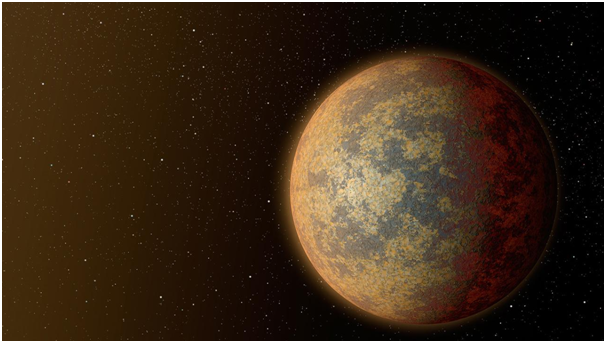Why is a star-planet pair emitting radio signals?
Context: YZ Ceti b is a rocky, earth-sized exoplanet rotating around a small red dwarf star, YZ Ceti, barely 12 light-years from Earth. Astronomers have detected a repeating radio signal from this exoplanet, suggesting the presence of a magnetic field — one of the requirements for a habitable planet — around it.
How was the discovery made?
- The discovery was made by two astronomers from Bucknell University, Pennsylvania, and University of Colorado, Boulder, using the Karl G. Jansky Very Large Array radio telescope in New Mexico. They published their findings in the journal Nature Astronomy on April 3.
- They had to make multiple observations before they could detect the radio signals from the star YZ Ceti, which seemed to match the orbital period of the planet YZ Ceti b. From this, they deduced that the signals were a result of the interaction between the planet’s magnetic field and the star.
Why does the magnetic field matter?
- Just as energy surges from the sun sometimes disrupt telecommunications on earth and damage orbiting satellites, intense bursts of energy from the YZ Ceti star-exoplanet exchange produce spectacular auroral lights.
- These radio waves, strong enough to be picked up on earth, confirmed the existence of an exoplanetary magnetic field.
- Such signals can only be produced if the exoplanet orbits very close to its parent star and has its own magnetic field to influence the stellar wind and generate the signals.
What does this mean for YZ Ceti b?
- YZ Ceti b has a small orbit — astronomers determined that the planet takes just a couple of earth-days to circle its star.
- Since the mid-1990s, astronomers have found hundreds of planets orbiting stars similar to the sun.
- To have an atmosphere and sustain water, a planet has to be at a certain distance from its star (in orbits said to be in the star’s “Goldilocks zone”), or it will get burnt.
- Earth, for example, would have been a lot more like Venus if it had been just a little closer to the sun or cold like Mars if it had been any farther. Astronomers believe nearly 30% of all star systems discovered could potentially have “Goldilocks zones”.
How common are such magnetic fields?
- With such overwhelming numbers, it always stood to reason that strong planetary magnetic fields should be common outside the solar system.
- Nevertheless, despite many of the larger exoplanets detected being found to possess magnetic fields, planetary scientists have never been able to identify such fields on smaller, rocky exoplanets — until now.
- If the latest findings are confirmed by further research, they will confirm their method’s ability to lead to the “magnetic characterisation of exoplanets”.
- This is important because the survival of a planet’s atmosphere may well depend on its having, or not having, a strong magnetic field, since the field protects its atmosphere from being eroded by the charged particles from its star.
| Practice Question
What are electromagnetic waves? How do they help in our daily life? |




